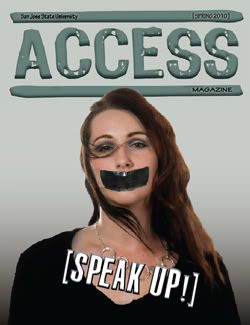Checkered Past
The history around your neck
Chain-link and checker patterned, lightweight scarves are a global trend and are draped around the necks of the most fashion-savvy during the year. However, these popular neckpieces are more than a simple accessory or fashion statement to those of Middle Eastern descent. The kaffiyeh (pronounced kuh-FEE-yeh) scarf originated in ancient Mesopotamia and has since evolved into a symbol of Palestinian heritage, nationalism and solidarity.
The kaffiyeh originated as a Mesopotamian representation of fishing nets or ears of grain. According to an article titled “Seeing Double: Palestinian/American Histories of the Kufiya,” by Dr. Ted Swedenburg, professor of cultural Middle Eastern anthropology at the University of Arkansas, the kaffiyeh later served as the traditional headwear of Middle Eastern peasants. Woven from wool and cotton, the scarf is worn around the head of Arab men to shield their faces from the desert sand, sun and dust storms. The scarf became a representation of Palestinian nationalism and expression of class struggle during the insurrection against British occupation from 1936 to 1939. During this time the kaffiyeh was still primarily utilized for ecological reasons. Dr. Mira Amiras, coordinator for the Middle East studies program at SJSU, says, “The president of one of the banks in Dubai told me that when he was a kid…the kaffiyeh was used for filtering parasites by drinking water through the kaffiyeh, and even filtering cigarettes by smoking through the scarf.”
The kaffiyeh was worn more prominently in the 1960s when the Palestinian resistance movement began. The scarf also became a visual extension of support for Islamic terrorism and jihad during the reign of Palestinian leader Yasser Arafat from 1996 to 2004. According to a feature in The Seattle Times called “Understanding Turbans,” men in Jordan, Saudi Arabia and the Arab Persian Gulf states continue to wear the kaffiyeh in varying colors and styles depending on their region.
Today, the Western world has significantly diluted the potent symbolism of the kaffiyeh by mass-producing the scarf for the urban, consumer public. The kaffiyeh initially became fashionable in Western nations during 2007 when young “hipsters” and celebrity style icons such as David Beckham and Mary-Kate Olsen wore them as neckerchiefs (draped around the neck and tied at the back, forming a V-shape at the front). Teen Vogue magazine declared the kaffiyeh “breezy, global chic” and the “must have” accessory of the year. Since then, the kaffiyeh has been widely sold — from $20 at Urban Outfitters to more than $4,000 from designer label Balenciaga — and is continuing to increase in mainstream popularity. Though these sellers maintain the distinct chain-link and checkered pattern of the traditional kaffiyeh, they offer their scarves in variety of colors, creating urban appeal while changing the meaning behind them. Yet as the Israeli-Palestinian conflict continues, there has been more debate on the commercial adoption of such a politically charged scarf amongst Westerners. Thus, a single question remains: To kaffiyeh or not to kaffiyeh? Let your careful interpretation of the scarf decide.
Hannah Keirns


Latest Comments